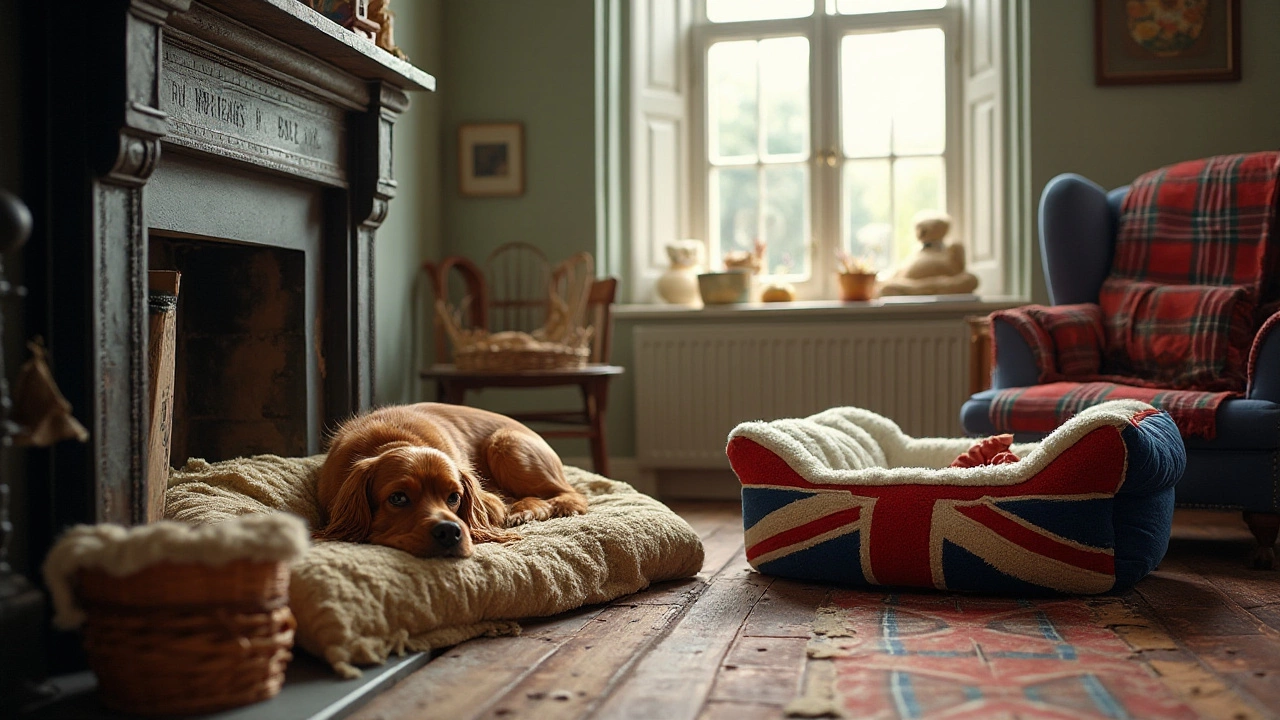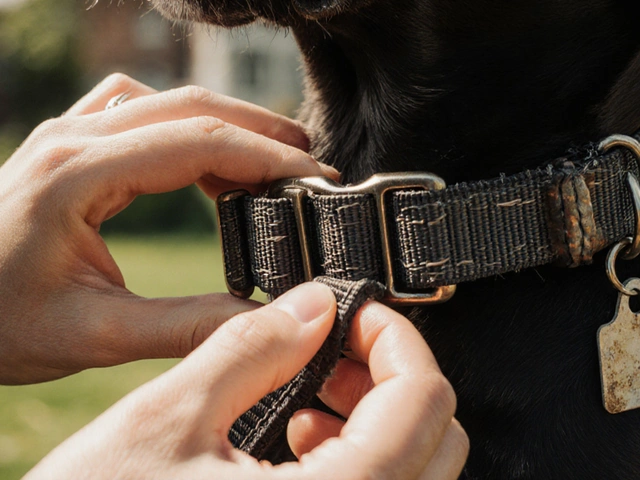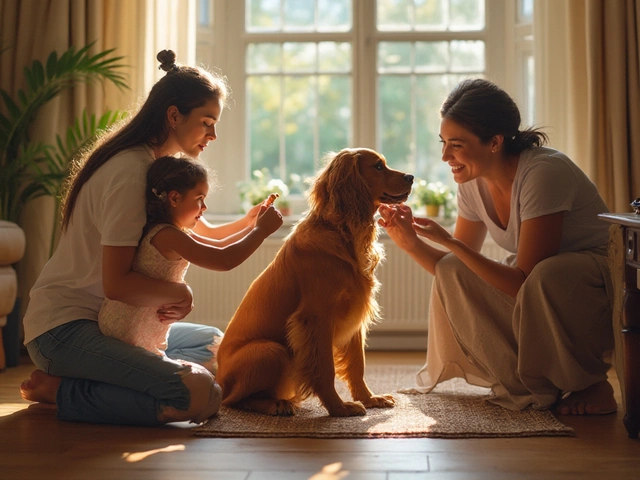A cozy dog bed isn't just a luxury for your pet; it's a necessary haven that offers comfort and security. But just like their favorite toy or bone, dog beds don’t last forever. Watching for the right signs to replace one can ensure your pooch enjoys a restful sleep and maintains good health.
Dogs deserve the best, and their bed plays a big part in that. With time, beds can become worn, smelly, and less supportive. If ignored, this can affect your pet's comfort and health. This article aims to help you determine the optimal time to get rid of your dog's old bed and invest in a new one.
- Signs of Wear and Tear
- Health and Comfort Considerations
- Choosing the Right Replacement
- Maintenance Tips for Longevity
Signs of Wear and Tear
Recognizing when it's time for a new dog bed often begins with spotting the signs of wear and tear. Firstly, check the bed's fabric for any visible rips or tears. Over time, even the sturdiest materials can succumb to a dog's claws and teeth - especially if your furry friend has a habit of digging or chewing. Mending these with patches or stitches might seem tempting at first, but persistent damage could lead to stuffing coming out, which poses a choking or ingestion hazard. Plus, visible signs of damage often indicate that the bed has lost much of its original support and comfort.
The odor is another clear indicator. Dog beds can absorb various smells over time, from the wet dog smell to odors from their favorite treats. A lingering smell, even after a good wash, suggests that the material is worn down or perhaps that it's harboring bacteria. Pet Expert Amy Shojai once remarked, "A persistent stench sometimes means it's time to put the bed to rest." It's crucial to remember that strong odors aren't just unpleasant for humans but can be distressing for dogs too, affecting their overall sense of comfort.
Ever noticed your dog hesitating before plopping onto their bed or opting for the floor instead? This could signal diminished comfort. Beds that have lost their shape or firmness generally lack the necessary support, especially critical for older dogs or those with joint issues. Check for lumps or uneven stuffing, which can make lying on the bed uneven, making it less inviting for your pet. If any part of the bed's fabric begins to lose shape or elasticity, this can also mean it's underperforming in comfort delivery.
Inspection underneath the surface is equally important. If your dog bed comes with a removable cover, remove it and examine the inner cushion. Stains that are impossible to wash out, combined with visible deterioration, indicate the bed's decline. A closer look might reveal that certain areas are thinner or show signs of mold, which could pose health risks to your dog. In high-quality beds, the cushioning is as critical as the cover. If it's significantly more compressed than when you first bought it, its ability to provide essential support is compromised.
Lastly, analyze the bed's retention of warmth. If you notice it's not providing as much heat as it used to, this might be due to lost insulation properties. Some dog breeds are more susceptible to cold, making this factor significantly more crucial. With the various pet care tips available online, ensuring warmth in a dog bed is often cited as essential for maintaining a pet’s comfort and health.
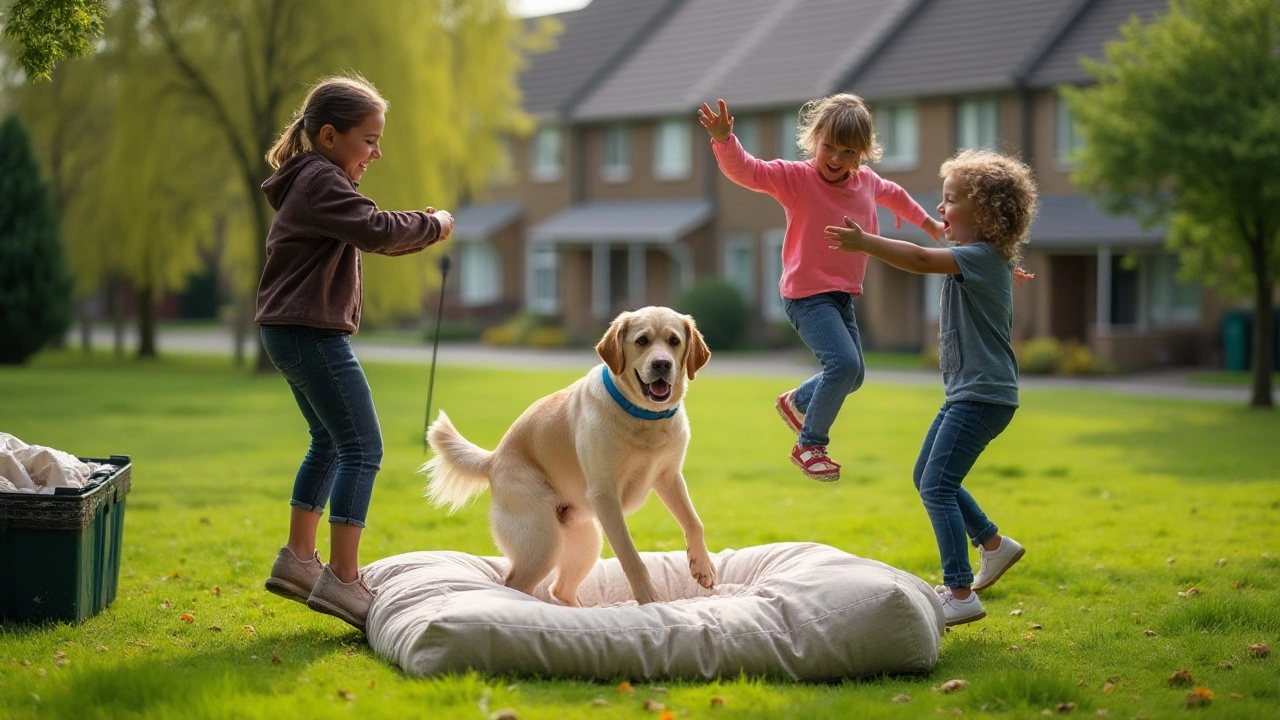
Health and Comfort Considerations
The health and comfort of your furry companion are top priorities when it comes to their sleeping arrangements. A comfortable dog bed is more than just a place to crash; it's a sanctuary that can affect their well-being significantly. Your pet's health can easily be compromised if the quality of their bed deteriorates over time. Just like humans, dogs need proper support during rest, which is crucial for joint and muscle health. Especially for larger breeds or aging dogs, the support provided by a bed can alleviate pressure on their joints and help in managing conditions like arthritis. Ensuring your dog's bed remains plush and supportive is a step toward minimizing these health issues.
When evaluating your pet’s bed, start with a simple touch test. Run your hand along the surface; if you can feel the floor through the padding, it’s a clear indicator that it’s time for a replacement. A flattened bed can lead to a sore dog, causing discomfort during sleep and reluctance to rest on it. A robust and well-padded bed promotes good posture and aids in deeper, more rejuvenating sleep. Suboptimal sleep can have side effects such as increased irritability, lethargy, and even behavioral problems. It's essential to remember that dogs often spend half their day sleeping at least, and providing a quality bed supports a third of their life, enhancing their daily activities.
Moreover, pay close attention to any changes in your pet’s sleeping habits. If they suddenly choose the floor over their designated bed, it might suggest they find the bed uncomfortable. Just like people switching from a lumpy mattress to a firm one for a better night’s sleep, dogs might too change their preference if their bed is no longer satisfactory. Signs of avoidance or discomfort, such as rolling around excessively or increased panting, can be telling of a bed that needs replacing.
According to Dr. Jonathan Walker, a certified canine behaviorist, "A dog’s bed condition influences not just physical health but also their emotional state, impacting how safe and secure they feel in their environment."
Another key point to consider is the cleanliness of the bed. Old beds can harbor dust mites, fleas, or even mold, which can have adverse effects on your pet’s health. Regular washing can help maintain cleanliness, but once the bed is worn, the ability to keep it hygienic diminishes. Investing in a new bed can help in preventing allergies or skin problems that arise from these pesky invaders.
The selection of the replacement bed should be guided by your dog's specific needs. For instance, orthopedic beds with memory foam might be more suitable for dogs with joint issues, while elevated beds can aid dogs in warmer climates to keep cool. Ensuring that the material is appropriate for your dog's breed and habits—waterproof covers for those prone to accidents, or machine-washable for dogs with more active lifestyles—can make maintenance easier and prolonged. In summary, understanding and addressing the health and comfort needs of your dog through mindful bed selection and timely replacement is part of being a conscientious pet owner.
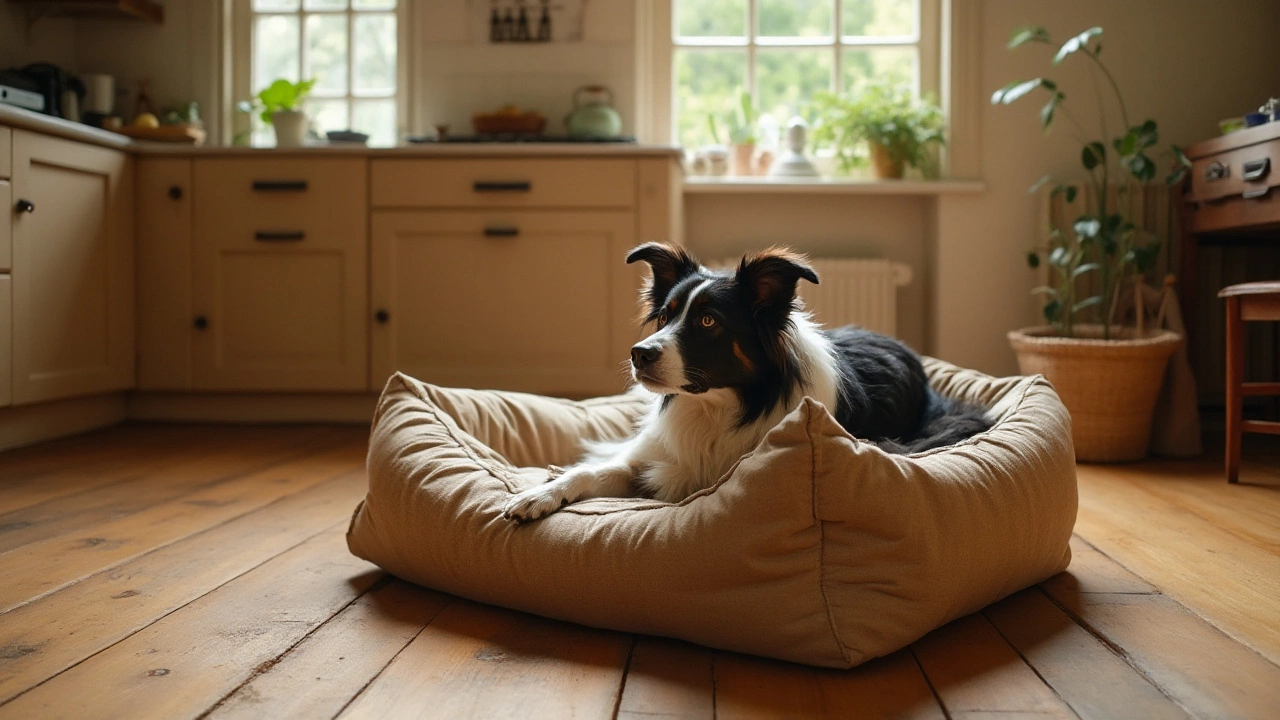
Choosing the Right Replacement
Deciding on a new dog bed involves more than just picking one that looks good in your living room. It's important to consider your dog's unique needs. The right dog bed can significantly enhance their comfort and well-being. Start by thinking about the size and breed of your dog. Larger dogs, like German Shepherds or Labradors, will require more space and support than smaller breeds like Chihuahuas or Pugs. Make sure their bed is the right size so your pet can stretch out completely, without limbs hanging off. Equally, a small dog swamped by an unnecessarily large bed might feel less secure.
The material and filling of the bed are crucial factors. Look for beds with memory foam or orthopedic support if your pet is older or has joint issues. Such features can make a big difference in reducing discomfort over time. Always check reviews or talk to your vet for recommendations. Fabrics should ideally be durable, removable, and washable. This helps maintain hygiene and can extend the life of the bed. In fact, a survey by the National Pet Owners Association found that 73% of pet owners listed easy-to-clean fabrics as a top priority when selecting pet products.
Considering Your Pet’s Habits
If your dog tends to chew or scratch, consider beds made from tougher materials or featuring reinforced stitching. Some manufacturers offer specialized chew-resistant designs. Observe how your pet uses their bed — do they like to curl up, spread out, or hide in a hooded model? Every dog is different, and there are beds designed to cater to every canine whim, from bolster and nest beds to flat mats and cuddlers. "A dog bed should be an inviting place," explains Dr. Katie Anderson, a well-known veterinarian.
"Dogs seek comfort and familiarity, so having a bed tailored to their behavior can make all the difference."
Climate is another aspect to keep in mind. In a cooler climate, you may want to look for a bed with extra warmth features, while those in warmer areas could consider options with breathable materials or cooling gel pads. Multi-functional beds, such as those that convert or adjust to different temperatures, provide year-round comfort. If you’re rethinking where the bed will go, measure your space carefully to ensure it fits seamlessly without disrupting pathways or appearing cluttered.
- Assess sleeping habits
- Choose the right materials
- Match bed size with dog size
- Consider climate and home decor
Ultimately, investing in a well-suited replacement can improve not only your dog's sleep but also their everyday mood and energy levels. A happy dog, cozy in the right bed, makes for a happy household.
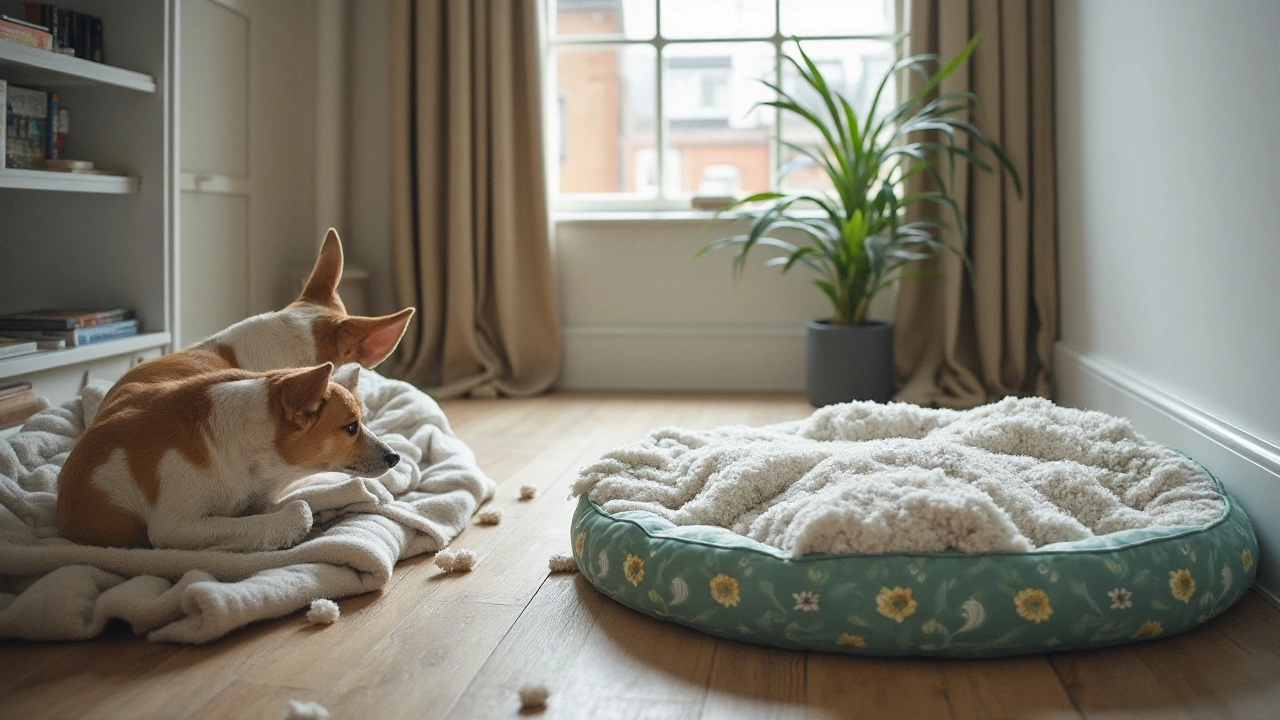
Maintenance Tips for Longevity
Ensuring your pet's dog bed remains in top-notch condition isn't just about keeping it clean; it's about maximizing both the lifespan and the comfort it provides. Regular maintenance is key, and it begins with routine cleaning. Always check the manufacturer's guideline on whether the bed is machine washable. If the bed cover is removable, wash it at least once a week. This helps eliminate odors and keeps allergens at bay. Many bacteria or mites can thrive in a warm dog bed, so this practice serves double duty by improving hygiene and extending the bed's life.
Stains and accidents happen with pets, and prompt attention is crucial. Have a pet-safe stain remover on hand to blot any mishaps as soon as they occur. Instead of allowing liquid to seep through the bed, which can quickly degrade the foam or stuffing, patience and a bit of effort can save it from permanent damage. Also, consider using waterproof liners, which act as a barrier to protect the bed from unpredictable spills or accidents, preserving its integrity. Without adequate protection, even top-quality beds can start to lose their shape and support far earlier than expected.
Where you place your canine's sleeping spot also impacts its longevity. It's best to keep the dog bed away from direct sunlight, which can cause fabrics to fade and weaken over time. Additionally, dogs often enjoy a cool, draft-free zone, similar to humans. Maintaining an optimal location boosts your pet's comfort and helps maintain the durability of the bed. Proper care in placement can prevent the bed from developing unpleasant, stubborn smells that arise from damp, dark, or humid settings.
Being proactive in watching for early signs of wear is another effective approach. Lumpy stuffing and warped support can indicate it's time for maintenance. If the stuffing or foam inside seems to be losing its original bounce, consider fluffing or replacing it. Regular rotation of the bed can evenly distribute wear, making it a simple yet effective technique in extending its life. Verifying zippers, seams, and stitching conditions regularly prevents minor repairs from becoming severe issues later that could warrant a more costly replacement.
"To get the best out of your pet's furniture, upkeep is essential. A mix of regular cleaning, placing the bed properly, and routine checks can considerably prolong its life, making it more than a temporary home." - Jane Matheson, Pet Product ExpertUltimately, a balanced mix of consistent cleaning, upkeep, and placement strategies can extend the utility and pleasure your furry friend derives from their dog bed. Embracing these tips helps in maintaining a comfortable and healthy space, showing your pet the love and care they bring to your life every day.

